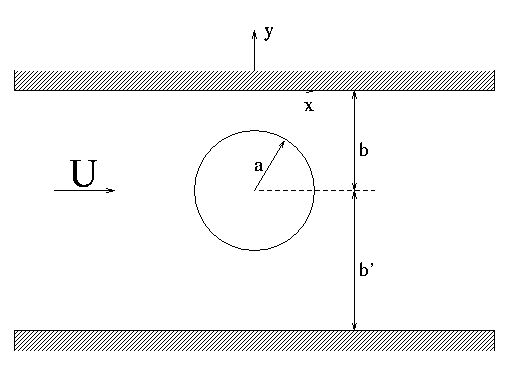
Consider the flow around the circle between the two walls as sketched below.
 |
We use the method of image to construct the potential function ![]() for this problem. To satisfy the boundary condition of no flux in the upper wall, we have to add the potential function which is the mirror image with respect to this wall of the potential function for the circle in the free stream with velocity
for this problem. To satisfy the boundary condition of no flux in the upper wall, we have to add the potential function which is the mirror image with respect to this wall of the potential function for the circle in the free stream with velocity ![]() in the
in the ![]() direction.
direction.
Next, we have to satisfy the boundary condition of no flux in the lower wall. So we have to add to the potential function constructed in the paragraph above the potential function which is its mirror image with respect to the lower wall. Now we satisfy the no flux boundary condition at the lower wall, but the no flux boundary condition is not satisfied at the upper wall anymore, and we need to repeat the method of image with respect to the upper wall.
We repeat the addition of the mirror images with respect to the upper and lower walls in the attempt to satisfy the boundary condition of the no flux at both walls. This generates an infinite series, as suggests by the expression for the potential function
![\begin{displaymath}\begin{split}
\phi(x,y) = & Ux\left(1+\sum_{n=0}^{\infty}\lef...
...n+1)b+(2n+2j)b')^{2}}\right\}\right]\right),\end{split} \notag
\end{displaymath}](img4.gif) |